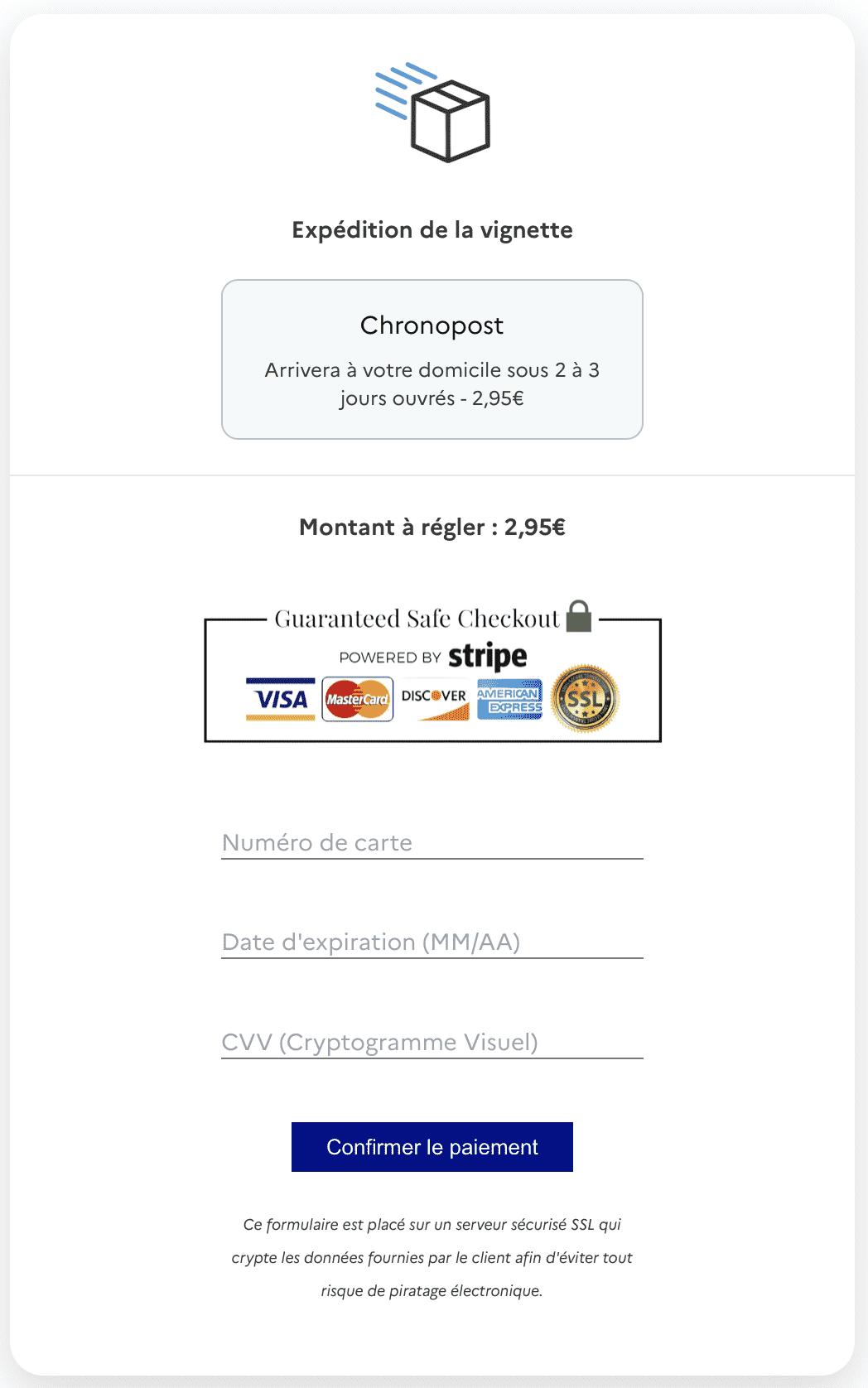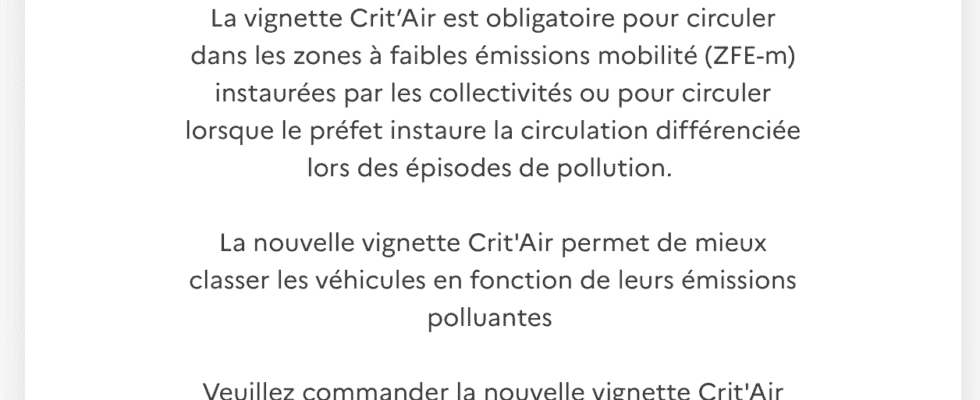Be careful if you receive an SMS inviting you to urgently order a Crit’Air vignette. This is a scam, which could cost you dearly.
GOV: Please order the new Crit’Air sticker before 03/1022 to avoid exposing yourself to fines via: critair-dispositif.fr. Here is the type of SMS you are likely to receive soon. Warning: this is a scam! And as often, it is very well put together.
By clicking on the link, you risk, in fact, landing on a website in the colors of the French Republic, resembling like two drops of water an official site of the administration. It is is nothing: it is a copy posted by scammers. At the time of publication of this article, the fake critair-dispositif.fr site was still online, but may not remain so for long. It is likely, however, that clones will soon appear, other addresses.
Hooks that change regularly
The goal of scammers is always the same: to steal your personal information. A technique called phishing, or hameonnage in French. Here, the hook is therefore the Crit’Air thumbnail, this badge stuck on the windshield of your motor vehicle, which classifies it according to the degree of pollution put in the air. But it is interchangeable. In the past, cybercriminals have used the personal training account (CPF) or the Vitale card to achieve their ends. As soon as a hook is too worn and their targets stop falling into the trap, they change it.
Arrived on the fake site, you are informed that the Crit’Air sticker is compulsory. This is false: it is only essential for driving in low mobility emission zones (ZFE-m) set up by local authorities – currently a dozen in France, in the main cities – or during pollution episodes, when a prefect decides it. For create a sense of urgency among the victims, the site invites you to order it quickly: before 13/10/22 on the site that we were able to consult. Otherwise, you expose yourself to fines.
up 150 € premium openness thanks to our comparison of online banks
In the viewfinder, your bank identifiers
If you fall into the trap, the site then asks you to enter your license plate number, your surname, first name, address and telephone number. Above all, you must return, to pay for sending the sticker, your bank card details: unique number, expiry date, CVV. Sensitive information, which will allow cybercriminals, in a second step, tosteal your payment method for online or in-store purchases, using mobile payment.

Payment by mobile: here is the weak point which explains the massive fraud on Apple Pay
Faced with these increasingly realistic and sophisticated scams, there is a solution: be in permanent vigilance and systematically apply some safety tips:
- Never click on a link sent by SMS or email, even if it appears to be sent by a trusted third party, your bank or a government agency for example. Go directly to the site of this third party, after looking for its web address in a search engine.
- Never share your login codes your online banking space, even your loved ones;
- Never communicate security codes received by SMS a third party, even if he presents himself as a bank adviser.
This list is not exhaustive. To find out more about how to fight scams, check the Security section of your bank’s website.
